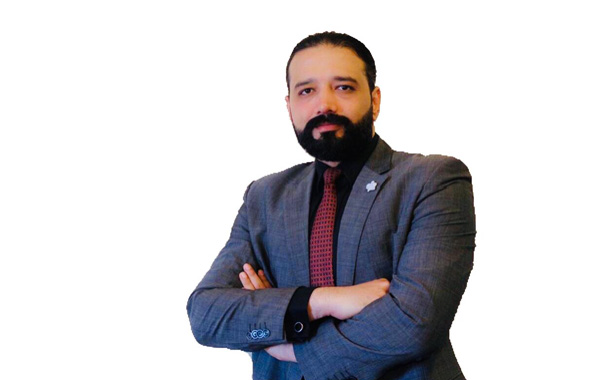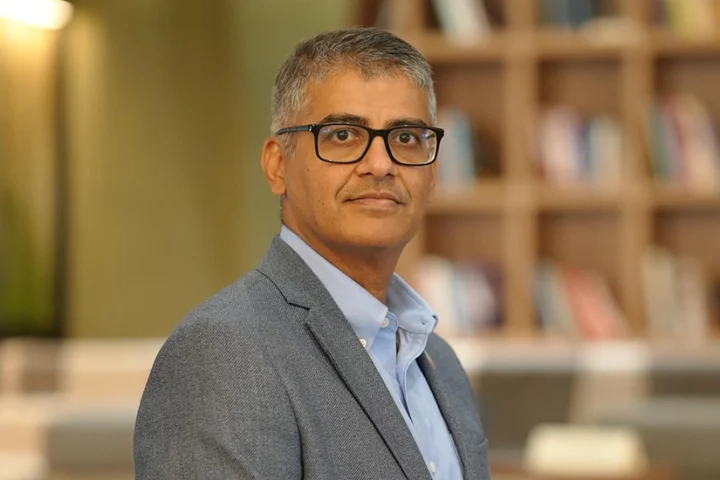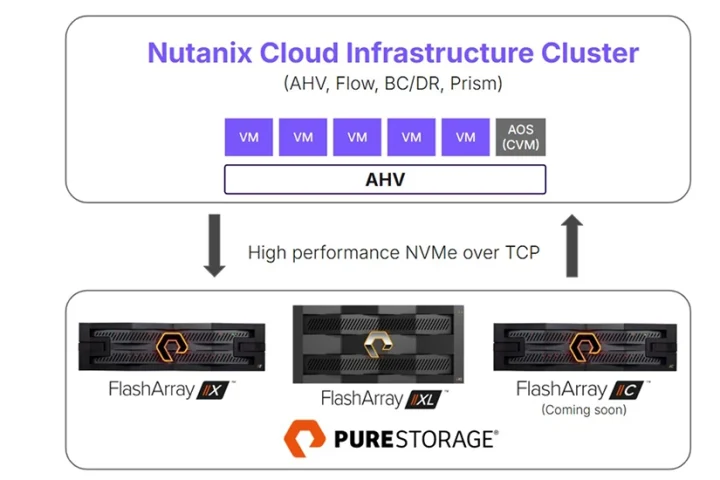IT plays a significant role in banking these days. How does Al Hilal bank make sure to stay aligned with the changing IT developments?
Leveraging technology for competitive advantage, through better services and operational efficiency is at the heart of our IT strategy.
We are mindful that banking industry in the region have certainly seen their share of technology driven disruption over the last few years — from online banking to peer-to-peer lending to blockchain – based payments and money transfers to new evolving trends. With rapid technological advancements, customer behaviours and demands are changing and ever-growing.
This storm of transformation in the middle-east banking is in the making not just from within due to natural competitors, but also because of other industries leading the curve with disruptive approaches, which can rightly be perceived as a new generation of disruptors.
Moreover, new entrants are also impacting the banking value chain and as we observe the patterns they can quintessentially be distinguished into three classifications;
some are aggregators who are emerging with a layer of apps and portals to amalgamate financial offerings from different providers resulting into a one-stop-shop for banking customers.
Some can be considered as innovators such as PayPal and Apple Pay who are questioning the fundamentals of traditional banking services such as payments and are introducing cutting edge platforms enabling customers to be more self-reliant to experience convenience in mundane banking services.
Some entrants are eager to change the game and drastically transform the banking by providing peer-to-peer platforms, innovative products and value added services on digital channels to extend their reach to a greater market place with competitive pricing to emerge as disruptors.
We along with our peers are all going through the same journey and are striving to lead the curve by launching introducing video based interactive teller machines (Branch in a BOX),
We are proud to be the first bank in the region who integrated Emirates ID with our systems to enable customers to use our channels through the national identification document.
We are proudly the first Islamic bank in the world to use Blockchain for the resale and settlement of an Islamic Sukkuk.
We are amongst the first few banks in the region who have launched an Integrated Data Warehouse and have adapted latest technologies for Risk and Finance integration to comply with recent regulations such as IFRS9
Recently As part of our Digital and Operations transformation programme, we introduced our Payments STP (straight-through-processing) initiative. With STP, online (internet banking/ mobile banking) fund transfers in AED and inward fund transfers are now carried out almost instantly, adding speed and efficiency to the process.
According to you, what challenges would the traditional banks face with the new emerging financial technologies?
Brett king in his book bank 3.0 rightly said that banks will no longer be a place you would want to go but banking would rather be something you would do.
By far the biggest challenge that traditional banks are facing is that the pace at which they are trying to adapt new technologies is drastically slower compared to the pace at which demands of the new generation of customers mainly millennial are increasing or the pace at which non-banking companies are adapting technology to question or rather disrupt the fundamentals of traditional banking.
It is also imperative to appreciate that host of different factors are intersecting to finely but uniquely change the way the banking industry will operate in foreseeable future.
Demographic shifts in the customer base are paving way for new expectations, which are in turn creating an opportunity for other non-banking players like Telecommunications and FinTechs.
Industry experts also predict that soon, the biggest bank will be a technology firm.
There are opinions in the market with respect to how banks are responding to the challenges they are up against, whether through investment, data management or new strategies to engage with customers. But with every step, there are obstacles.
Even as customers primarily conduct transactions over mobile, banks are discovering they still expect branch service to be an option. Traditionally banks could easily get away with simple apologies for service interruptions, this may not work well with the new customer base which expects efficient service and is potentially able to choose technology firm offerings as an alternative.
The outsider challenge is by far the real challenge as young consumers are open to change in financial services. That’s creating opportunities for tech firms to consider entering the industry. Google, Amazon or even Facebook are already contemplating to offer banking services to consumers. While big tech firms explore the possibility, FinTechs start-ups are already trying to take advantage of this sentiment, by developing new offerings that can convert personal finance management and investing accounts into checking and savings customers.
More customers are now using their phones for transactions and mobile is the only channel that has seen increased engagement in the last five years. But consumers still expect in-person options for service too or at least they wouldn’t feel comfortable to open an account with a bank that didn’t have at least one local branch, it is considered important. Even tech-savvy millennial want a virtual experience with tangible offerings and it matters in their decision on where to bank. Millennials are setting their own expectations for how quickly they should be receiving services such as opening an account or even getting a mortgage.
Banks also face a challenge to respond to competition from big techs by adopting open banking strategies, beginning with open application programming interfaces for secure data exchange, banks need be on the leading edge through filling service gaps or enhancing their offering by embedding third party services into their platform.
Customer information is one advantage that banks have over FinTech competitors, but they have grappled with how to utilize their data assets effectively. Leading banks should leverage data to improve their customer relationships and work with customers on how to make their services more relevant. Data management investments will improve how they share data and help build closer relationships.
One of the challenge is that there are a variety of technologies that banks are considering in their effort to adapt digital technologies. Which one to adapt first is an important question to ask considering the ROI potential and the immediate impact it brings. Mobile Banking, biometrics software and Cloud have been the leading technology investment areas for banks so far. Despite industry-wide discussion over the potential of blockchain technology for example not many banks have plans to invest in blockchain at least for the next three years.
Artificial intelligence has emerged as another tool to help banks with digital demands, however early adoption has its own challenges.
The decision to either build or buy technology has always been an enduring debate in financial services, however it has recently started again in the digital banking era. Despite outsourced tech options some banks globally still expect to develop technologies in-house. Which option is more viable for a bank is an important strategic question given its size and other factors.
With the ever-changing technology disruptions, what is the future of banking services?
The banking industry is experiencing disruption at an increasing pace. Over the past few years, traditional financial institutions and non-traditional FinTechs firms have begun to understand that collaboration may be the best path to long-term growth.
The rationale for collaboration is the ability to bring strengths of both banks and FinTechs firms together to create a stronger entity than either unit could bring on their own. For most FinTechs organizations, the primary advantages are an innovation mind set, agility (speed to adjust), consumer-centric perspective, and an infrastructure built for digital. These are advantages that most legacy financial institutions don’t possess.
Alternatively, most banking institutions have scale, a stronger brand recognition and established trust. They also have adequate capital, knowledge of regulatory compliance and an established distribution network. Traditional financial institutions have a vast customer base and deep pockets, but with legacy systems holding them back.
The challenge will be the ability to establish an environment where collaboration can flourish as opposed to stifling the beneficiary attributes of either partner.
As the saying goes “The electric light did not come from the continuous improvement of candles” Traditionally banks have been adapting technology to iteratively improve the traditional way of doing banking rather than taking an approach to think fresh in terms of how technology can be adapted to disrupt the old way of doing banking completely and this is where innovations and fresh perspective through FinTechs and new entrants can potentially help.
What would be your advice for the next generation professionals aspiring to be IT leaders?
To share from what I have learnt from my career, I can look back and see all the dots I created along my career pathway. These dots never lie in a straight line. They go zigzag and in all possible combinations. I took advantage of opportunities to accept assignments outside of my comfort zone. I looked for and implemented new ways of doing things within my areas of responsibility. I looked at problems in new ways, and found new solutions. I stepped out and did new and different things. I took risks. Sometimes I failed, but I never let that stop me from moving forward. It is said that those who never fail never do anything. Failure is painful when it occurs, but it develops resiliency and helps in tackling larger challenges in the future.
There has never been a better time to be in the world of technology then today, with technology changing the face of almost every industry and norms of our society there is no reason why young aspirants should not aim to fly high and be part of making a difference.
Some of the golden rules that I have adapted in my career can potentially be worth considering by young IT leaders:
Work as a team – Skills and competencies can be acquired, but what really makes a difference in achieving targets is to work as a team with common vision, goals and targets.
Team is as strong as its weakest link – We need to be mindful of our shortcomings or gaps and more importantly must have a plan in place to address them before they come back to hurt us.
Where it is possible try to keep work and things simple, simplicity always help you and the ones you work with or work for.
Aim to deliver fast, better and cheaper – Perfectionism is a virtue however at times it comes with a cost and true IT leaders should have the wisdom to do what is best under the constraints of time and costs.
Work hard and play harder – do whatever you want to do but with a deep contentment in your heart. The heart must always be contented, and then your work becomes merely a play.
As an IT Leader, what are your top 3 priorities for this year?
This year our top three focus areas are as follows:
- A) The launch of our next generation mobile application with great customer experience in the form of latest UX designs and also via seamless processing of services with high performance so that our mobile banking platform brings more value for our customers.
- B) We are also looking forward to enhance our capabilities in the area of Enterprise Fraud Management whereby the idea is to leverage Advanced Analytics and Artificial Intelligence to predict fraudulent patterns in the transactional behaviour of our customers and also be able to analyse network linkages between customers.
C)We are also eager to launch Data Transformation Phase II whereby the focus will be to leverage data in our data warehouse to perform predictive modelling, advanced analytics as well as forecasting for our business end users to be able to reach out to our customers with better value proposition.



















